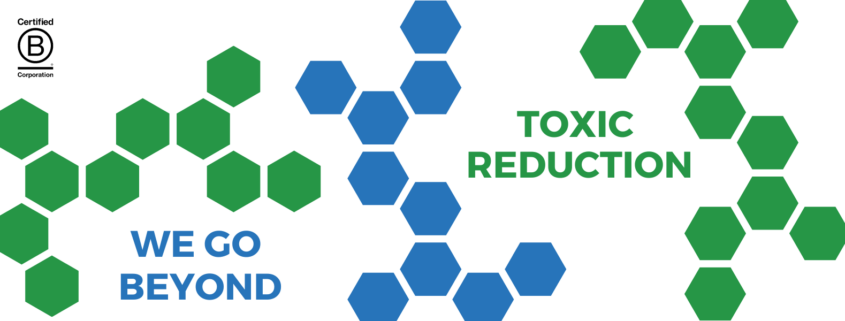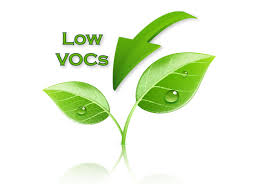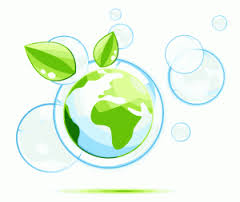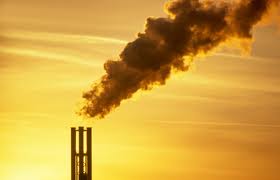Lowering Toxic Reduction: Understanding The Imperfections Of Chemicals
Despite the many results and profits chemicals bring, chemicals do come with several disadvantages. One of the most notable of these is toxicity. Most chemicals are not safe for consumption, and if exposed to them often enough without precaution, they can bring about a variety of health complications for both people and the environment.
Although this toxicity is present in a majority of industrial used solutions, there are environmentally friendly alternatives available for usage. They do not possess any toxins and promote a cleaner world.
However, these components, qualities, and possibilities have led some to believe that there can be a ‘perfect’ chemical. A substance that is above all others in quality and performance, can be applied and distributed without risks or consequences. And although this would be highly effective and ideal, this simply is not true.
No chemical is perfect. Each diverse and specific combination of elements comes with its strengths and weaknesses.
Inside this community blog, we will further explain the composition of various chemicals, the history of their applications, what makes a chemical toxic, and how we promote toxic reduction as well as effective chemical usage.
A Brief History of Toxic Reduction
Before we can discuss some substances’ toxic natures and how to lessen them, we must begin with a better understanding of how they have come to be.
The origin of chemicals has been roughly traced back to a few hundred thousand years after the creation of our universe. From the aftermath of the notable explosion, two distinct subatomic particles- electrons and protons- had cooled enough to settle into several elements. Two of these elements include helium and hydrogen, with helium receiving a lesser amount than hydrogen.
Although these two subatomic particles contributed to these, this would be their most notable contribution to the formation of the substances that we know today. Since most other elements’ origins are attributed to the stars. Stars had been given their place in our universe millions of years after their formation. And it is from the formation of these many elements that chemical compounds became possible. Not only for our universe but for our world as well.
When humans began to utilize these peculiar and vintage substances is somewhat unknown. There is no exact date, but historians have traced it back to ancient times. Where civilizations without modern industries had managed to create glass through the combination of alkaline and limestone. Glass that would then go on to be used for multiple products for trade. However, this creation of products from entwining certain combinations would not be the last nor would this new chemical development be lost to time.
Soon enough the practice of utilizing chemicals for one of their greatest potentials among others had become industrialized, centuries after the first to apply them. The industrial revolution- a revolution in technological advancements, beginning in Britain around the eighteenth century- had been the birth of the chemical industry. Despite not truly becoming worldwide until a century after, this revolution commenced the creativity and means to produce chemicals on larger scales as well as in multiple parts of the world. It is from this revolution, that we can have not only substances for a variety of applications but also other alternatives.
Chemicals for industrial usage though powerful and efficient, whether applied back then or in our current time, do produce toxins that harm not only the earth but ourselves as well. It is from the harm that these toxins inflict, some chemical companies have made efforts to offer more eco-friendly options. These efforts had begun a little more than two decades ago and have been gaining much support as well as implementation.
Toxicities & Limitations
Now that you have a good grasp on where chemicals have originated from and how the history of their applications has led us to the present, you may now be wondering the following question.
What makes a chemical toxic?
The answer to this is rather simple. Substances can be toxic due to containing components that damage the life of our planet as well as its many inhabitants. Two particular components that can result in a chemical’s toxicity are carbon and volatile organic compounds (VOCs). Exposure to these, no matter if it is brief or elongated, can cause an abundance of complications. For the environment, it pollutes the air. For people, however, the complications are much more felt and seen.
If exposed to these harmful substances briefly, people can experience some of the following:
- Vomiting
- Nausea
- Headaches
- Nose Irritation
- Eye Irritation
If the exposure is more than brief, people can experience some of the following:
- Central Nervous System (CNS) Damage
- Lung Disease
- Various Cancers
- Death
To avoid this exposure, some companies have introduced and encouraged chemicals that do not possess these harmful components. And although effective in keeping our environment healthy and those who use them the same, they do come with their consequences and limitations.
Eco-friendly chemical products come at a higher price than their harmful counterparts. This can make them less desirable to industries, especially to those who cannot afford the expense.
There is also the chance of customer backlash. Some consumers are reluctant to change, and may not approve. They may see nothing wrong with the current chemicals they purchase and might threaten to withdraw their support from their current supplying industry. The loss of customers, especially a significant amount, is something that no industry would want to risk.
However, with these toxicities and limitations aside, there is a compromise that can be found between the two. This compromise lies in toxic reduction through the use of various chemicals that benefit your industry, customers, and the environment.
How We At Ecolink Promote Toxic Reduction
Here at Ecolink, we have been contributing to the reduction of toxins for nearly two decades with our efforts in lowering VOCs. We do this not only through the featuring of greener chemical solutions but also by promoting solutions that give off lower VOCs while still maintaining their traditional makeup. In addition, we have several informative and concise blog posts designed to educate about proper chemical usage, including the lowering of toxins.
Several products that we offer to aid in this effort are:
- Acetone- 55 Gallon Drum
- ELECTRON- 55 Gallon Drum
- Soy Methyl Ester- 55 Gallon Drum
- Hexane- 55 Gallon Drum
Acetone
This chemical is one that we sell often and is regarded as a VOC-exempt compound. This means that it does not possess the same makeup as VOCs and therefore, is less damaging but also not eco-friendly. Industries use this substance for two main purposes, these being for hand-wiping cleansing and hand-wiping rinsing. It can be applied to an abundance of surfaces and possesses many other benefits.
ELECTRON
This dielectric solvent is not only efficient but classified as environmentally friendly. From its beneficial composition, it is able to clear away several unwanted elements such as grease and carbon. It also comes with many benefits aside from its nonharmful composition, such as being non-flammable as well as containing no surface leakage.
Soy Methyl Ester
This industrial cleaning solvent, also known as Methyl Soyate, also contains an eco-friendly makeup. It aids in the production of many products, such as detergents and lubricants, and slows drying times for paint coatings. Its benefits mainly stem from its design as well as its effectiveness.
Hexane
This chemical is often mixed with other solvents in order to enhance performance. It is like acetone, in that it is less harmful compared to the likes of VOCs. It is mainly used for various edible oil extractions and comes with several benefits such as a low boiling point.
Would You Like To Learn More about Toxic Reduction?
Then you do not have to look any further than us!
Here at Ecolink, we are dedicated to informing our industries on all things chemical. Whether it is from the diverse solutions that we sell or from the informative written pieces that we compose, helping you understand these diverse substances is our goal! Our products are plentiful and affordable, whether they are of a greener makeup or not. We aim to give you the best that we have to offer and then some for your industrial needs!
If you would like to get in contact with us, you can reach out to us here. We are here to help you with whatever you may need for your industrial applications and more. Please do not hesitate to get in touch with us today! We are just a click away!







